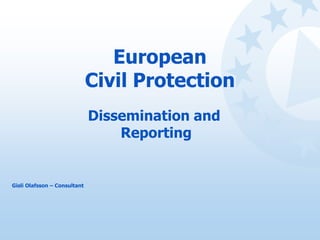The document outlines guidelines for effective reporting in the context of European civil protection, emphasizing stakeholder coordination, prioritization of information, and clear communication. It details the structure of situation reports, including background, needs assessment, local and international response, and coordination mechanisms. Key advice includes maintaining brevity, providing context, and explaining terminology and acronyms to ensure clarity for all stakeholders involved.












































